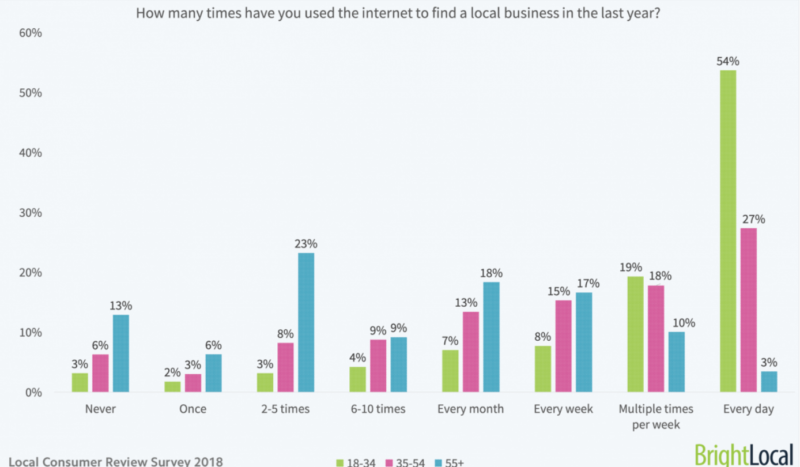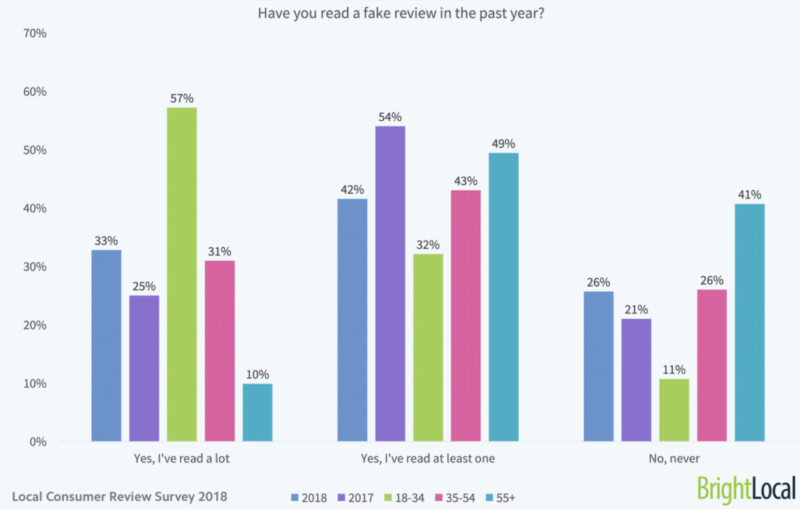
When it comes to reviews, recency matters. Forty percent of consumers say they only look at reviews of local businesses written in the past two weeks — with 85 percent saying reviews more than three months old are no longer relevant. That’s according to the 2018 edition of BrightLocal’s Local Consumer Reviews Survey. The report is based on a survey of 1,000 U.S. adults. This is its eighth year.
90 percent now read reviews. The survey findings show incremental, growing reliance on reviews and greater sophistication among users. However, there’s evidence of caution and even some distrust among those relying on reviews. They’re also more demanding and have higher expectations than in the past. Perhaps most interesting are the differences among age groups.
Below is a summary of some of the top-level findings:
- Nearly 90 percent (86 percent) of survey respondents now read reviews.
- Users read an average of 10 reviews for a given business but want to see roughly 40 reviews to trust the accuracy of the star rating (this is up from last year).
- Roughly 90 percent (89 percent) of respondents said they look at review responses by the business; however it’s a secondary consideration.
- Nearly 60 percent of consumers will only consider merchants with ratings of 4-stars or more.
- 40 percent of survey respondents only look at reviews that have been written within the past two weeks.
Majority of review consumption on mobile. Review usage is frequent and growing for all age groups. However, those in the 18 -34 year old category are much heavier daily review users than others. The survey also found that except for those 55 and older, the majority of review consumption is now on mobile devices.
There are some paradoxical findings around trust of reviews. Younger users (under 34) are more likely than other groups to “always trust reviews.” They’re also more likely to say they’ve seen “fake reviews.”

When evaluating a local business, in this order, users look at star ratings, then review quality, recency and length of reviews. A majority (60 percent) of survey respondents will only consider businesses with at least a 4-star rating. And on average, consumers want to see at least 40 reviews to believe the star rating’s accuracy.
Why you should care. It’s very clear that consumer expectations of reviews (and associated businesses) are growing. They want to see more reviews, more recent reviews and higher ratings overall. They rely heavily upon and trust reviews but are also growing more wary about the possibility of review fraud.
Google is now the dominant reviews platform (in terms of volume) and reviews are a local ranking factor. It’s therefore critical that local businesses and their marketing partners and agencies have active review management programs in place.
Contributing authors are invited to create content for Search Engine Land and are chosen for their expertise and contribution to the search community. Our contributors work under the oversight of the editorial staff and contributions are checked for quality and relevance to our readers. The opinions they express are their own.



